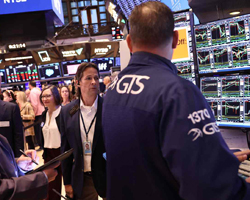Nasdaq Flirts With Summer Lows | Daily Market Analysis

Key events:
Nothing happened last week, rich in central bank news, that would make most of us change the bearish view on the stock market outlook. Analysts still expect the major U.S. and European indices to make new yearly lows. The Nasdaq index only needs to fall another 4-5% to do so.
We have to admit that after the sharp declines, the markets look somewhat oversold, so a small recovery would be justified now. However, the bears are likely to continue to defend their positions given the overall bearish environment.

NASDAQ chart
Nasdaq futures broke out another support area around 11,750 last week. That area has now turned into the most important near-term resistance that should be defended. As long as the Nasdaq holds below that area, the path of least resistance for it will remain a decline towards the June low of 11,036.
The lower lows and highs and the downward slope of the 21-day and 200-day Moving Averages, objectively speaking, tell us all we need to know. That the trend is now "bearish" is beyond question.
So, once again, for now, the stock remains in a downtrend. Investors rushed to sell shares along with the euro, pound, and almost all other foreign currencies as they watched bond yields continue to rise after a series of central bank meetings.

U.S. 10-Year Treasury
In particular, the Federal Reserve announced a 75 basis point key interest rate hike and signaled its intention to continue aggressively raising rates until it can get inflation under control. In response, debt markets rebounded strongly, pushing up yields on bonds with different maturities. The yield on the 10-year U.S. Treasury bond broke upward at 3.7%, further reducing the attractiveness of low- or zero-rate regular-return assets such as technology stocks and gold.
In addition to heightened fears about rising interest rates and inflation, investors also have to deal with an energy crisis that is weighing heavily on the European economy. The Russian-Ukrainian war continues as Russia has announced that it is sending reserve troops to Ukraine as part of "partial" mobilization. Additionally, weak European PMIs underline the problems.
On top of that, there is growing concern about the Chinese economy, whose growth is constrained by the government's zero-tolerance policy against the coronavirus, as well as weakness in the global economy amid a surge in price pressures.
Given all of these macroeconomic concerns and technical outlooks, it will be better not to buy at these deeps until the charts begin to indicate such a possibility. For short position holders, the current year is shaping up quite well so far. This trend is likely to continue until there are some fundamental changes in the market.









